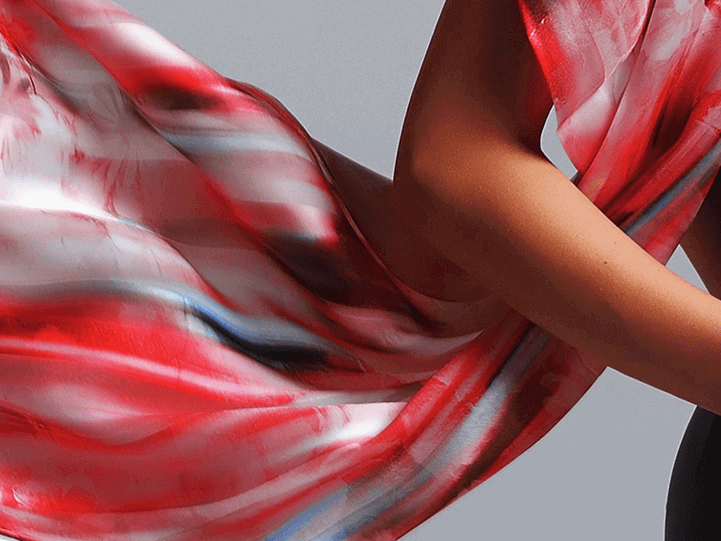
It is hoped that the increased need for sustainability will accelerate the growth of the pigment ink market, says Eric P Beyeler, global marketing manager at Artistri Inks, DuPont Image Solutions. Madelaine Thomas reports.
One of the biggest developments in sustainable inks is pigment inks. Considered a ‘universal ink’ because it can be used on a variety of fabrics, pigments are famed for relinquishing the need for pre- and post-treatment, thus allowing for less water and chemical usage in the printing process.
However, the pigment segment of the digital textile printing market remains small. According to WTiN Intelligence: Digital Textiles, pigment inks made up just 3% of digitally printed fabric globally in 2018.
Eric P Beyeler, global marketing manager, Artistri Inks, DuPont Image Solutions, says: “Over the last 10 years, the growth of the pigment segment in digital textile printing has not lived up to predictions of industry specialists. The much-improved performance of recently launched pigment inks, such as the superior dry and wet crock fastness of DuPont Artistri Brite P2700, along with growing environmental requirements will likely accelerate growth in this segment.” For example, Beyeler continues, he looks forward to seeing pigment inkjet inks make inroads in the home furnishing segment of the market.
Ink manufacturer DuPont is a third-party ink supplier that collaborates with its customers: “We have strong relationships with our printer OEMs (original equipment manufacturers) and remain an independent ink supplier so we can contribute to the success of all our customers worldwide,” says Beyeler.
In June 2019, the dissolution of DowDuPont was finalised, after DuPont had merged with Dow Chemical Company at the end of 2015. Beyeler says: “We entered the world as the new DuPont in June 2019 after separating from Dow. Our new company creates a more focused, multi-industrial company delivering highly specialised products and solutions aligned with high growth, high return opportunities in transformational markets.
“DuPont is uniquely positioned to leverage its balanced portfolio, deep customer relationships, R&D expertise and competitive operating model to win in the marketplace and drive value for all its stakeholders,” he adds. “The company is differentiated by its materials, ingredients and solutions expertise aligned with attractive, high-growth market trends – particularly health and wellness, advanced mobility, connectivity and sustainability – where our customer-driven innovation and value-added solutions play a transformational role.”
However, despite the company’s new position, challenges remain in ensuring the supply of sustainable inks. Beyeler explains: “Sustainability is a constantly evolving target. As a supplier committed to protecting the environment, we not only look at the sustainability of the products we buy, make and sell, but how they are being used and how we can design them in a way that can help minimise environmental impact. It requires us to combine science, market and regulation knowledge to stay current in these fields.”
Although the desire for sustainable developments in the textile ink and manufacturing space is evident, companies putting this into practice and making tangible changes is less apparent – this is particularly challenging. Beyeler says: “There is an undeniable desire by our customer base, brand owners (as evidenced by their stated goals) and all involved in the textile value chain to lower the environmental impact of textile printing. But the change to lower the environmental impact of workflow solutions has been slower than we desired.”
He continues: “Textiles printed by digital printing are only 6% of all printed textiles, although digital printing can significantly lower the environmental footprint of the printing process through lower water and energy consumption.” To increase sustainability in the textile printing supply chain, more companies must turn to digital, argues Beyeler.
Market segments
With those turning to digital, DuPont is continuing to develop its ranges. Beyeler says: “The simplified workflow of pigment and dye-sublimation ink jet inks delivers the lowest textile printing environmental impact by eliminating the steaming and washing steps. We have been steadily expanding our Artistri pigment and dye sub inks portfolio over the last 15 years. This includes developing printing solutions that can deliver the same colour intensity with less ink.”
As well as in the roll-to-roll segment of the market, DuPont has also worked in the DTG sector for a number of years. More recently however, printer OEMs have been developing their own inks, which could be a threat to third party suppliers such as DuPont.
“The DTG segment is growing in size, maturity and in print performance,” says Beyeler. “OEMs are working closer with, and sometimes integrating, ink suppliers to help optimise both the cost to their customers and the performance of the offering. Customers may benefit from this increased evolution speed, however, ever increasing challenges will be placed on the ink, requiring ink companies to be leading innovators.”
Have your say. Join the conversation and follow us on LinkedIn





